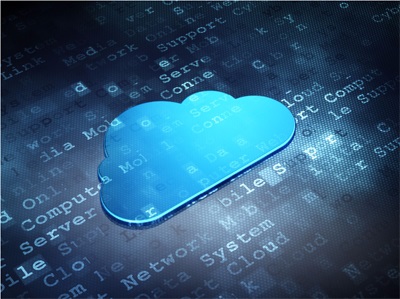The Device or the Cloud?
Greg Barnes
Vice President
Activelogix, LLC
|
July 2016 |
[an error occurred while processing this directive] |
| What’s more
important to the Building? The Device or the Cloud? |
Greg Barnes Vice President Activelogix, LLC |
| Articles |
| Interviews |
| Releases |
| New Products |
| Reviews |
| [an error occurred while processing this directive] |
| Editorial |
| Events |
| Sponsors |
| Site Search |
| Newsletters |
| [an error occurred while processing this directive] |
| Archives |
| Past Issues |
| Home |
| Editors |
| eDucation |
| [an error occurred while processing this directive] |
| Training |
| Links |
| Software |
| Subscribe |
| [an error occurred while processing this directive] |
The
Internet of Things (IoT) is defined by Wikipedia as
the network of physical devices, vehicles, buildings and other items
embedded with electronics, software, sensors, and network connectivity
that enables these objects to collect and exchange data. Some experts
estimate that the IoT will consist of almost 50 billion objects by 2020.
The
objects that often make up IoT are far from new. Buildings,
equipment, homes, and people have been using sensors and networks to
provide a steady stream of data about what’s going on. This includes
how people or devices are functioning, and where they are located for
many years. What has made IoT part of our everyday conversation is the
growth in computing power, mobile devices, apps and the pervasiveness
of wireless connectivity and cloud data storage.
IoT is generally composed of two or more important elements, including combinations of any of the following:
Some device manufacturers focus on a narrow device market, while others focus on an entire vertical solution.
In an increasingly connected world, devices are no
longer static one-and- done devices. In many situations, new features
and functionality can be pushed through the server to connected devices
on a regular basis. Each level
of the architecture has its importance in the final design solution,
and presents unique challenges and opportunities including:
Level One - Device:
Level Two – Local
Protocol:
Level Three –
Network Aggregation:
Level Four –
Software Analysis:
In order to really create value and mass adoption, industry must produce and contractors and owners must install accurate and reliable devices. We might not care what protocol they use as long as they measure data accurately, and do their job cost effectively.
The real opportunity of IoT is connecting us to a personalized experience with the whole ecosystem of devices within a building, getting data that impacts our bottom line, and improving comfort and/or securing the physical assets. These benefits come with using best of breed devices and Systems integrators who produce a system of meaningful data. But where should this data reside? How do we create that personalized experience for each type of user? Is it easier to do this in the Cloud? Or onsite? Do we have to settle for one or the other?
Many manufacturers of devices and industry organizations are solving the connectivity of their device to the cloud as networking costs fall and stores proliferate apps. End Users see the cost of this data communication to cloud dropping and they are deciding they can save upfront money by buying sensors, avoiding the installation of any local infrastructure, and going “Direct to Cloud”. There are many situations where this architecture makes good sense.
 But if you are a larger, diverse
or highly secure set
of buildings, what data should go to the cloud? Why? How? Accurate data
doesn’t always just show up… It has to be validated. How do we see data
from different devices on the same visualization? Sometimes logic must
be applied to data for control or energy management decisions. Networks
aren’t always online. But the
network aggregation level is the level
that everyone seems to want to get rid of… “Let’s go device to cloud”….
But if you are a larger, diverse
or highly secure set
of buildings, what data should go to the cloud? Why? How? Accurate data
doesn’t always just show up… It has to be validated. How do we see data
from different devices on the same visualization? Sometimes logic must
be applied to data for control or energy management decisions. Networks
aren’t always online. But the
network aggregation level is the level
that everyone seems to want to get rid of… “Let’s go device to cloud”….
It strikes me that the local
network and software are still
critical in the
success of many projects. Facilities can benefit from a hybrid of
onsite and “Cloud”. Cloud no longer means a visualization tool separate
from your automation vendor. Cloud no longer has to mean getting rid of
the local automation rules engine. Facilities still have to be
conscientious of installation costs, and weigh those costs against the
value of security, logic and visualization flexibility.
The IoT journey is going to help us learn to make our technology experience simple and intuitive. The Cloud will push us to be predictive. It will provide us with knowledge beyond the initial data, and improve the access to visualization and experience for everyone. However, it is only as good as the device data input and the logical operation of equipment.
In the end, both the “Device” and the “Cloud” will play important roles in how we control and improve our buildings. The importance of either depends on the time, budget, objective and situation of your decision. Join Activelogix and other industry thought leaders on October 12th for our Inaugural Technology Forum to discuss how the Internet of Things will impact our industry, devices and buildings. www.alxtechforum.com
AutomatedBuildings is pleased to be a media sponsor for the Inaugural Technology Forum.
[an error occurred while processing this directive]
[Click Banner To Learn More]
[Home Page] [The Automator] [About] [Subscribe ] [Contact Us]